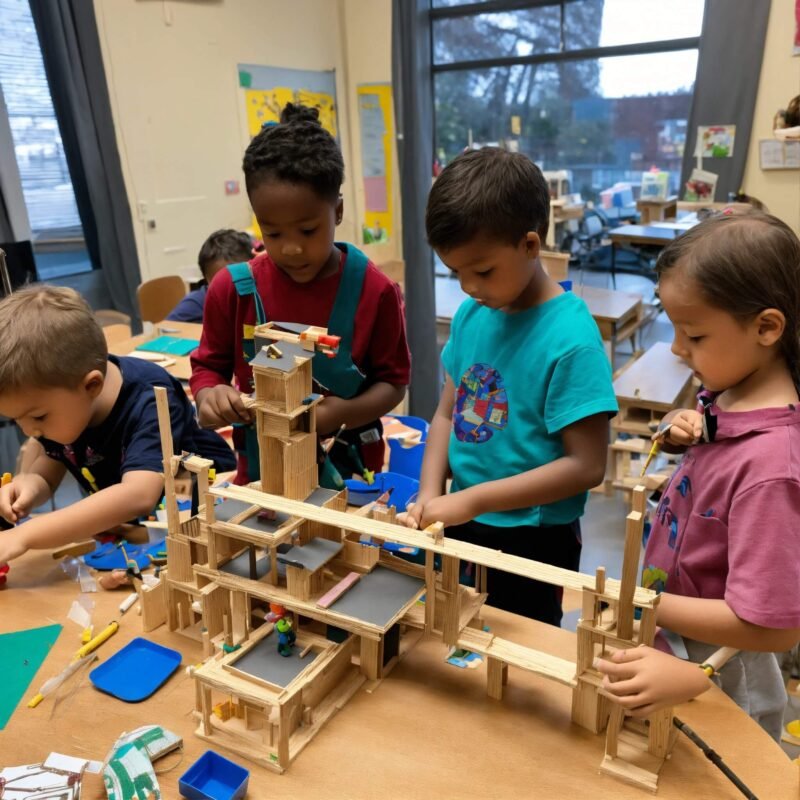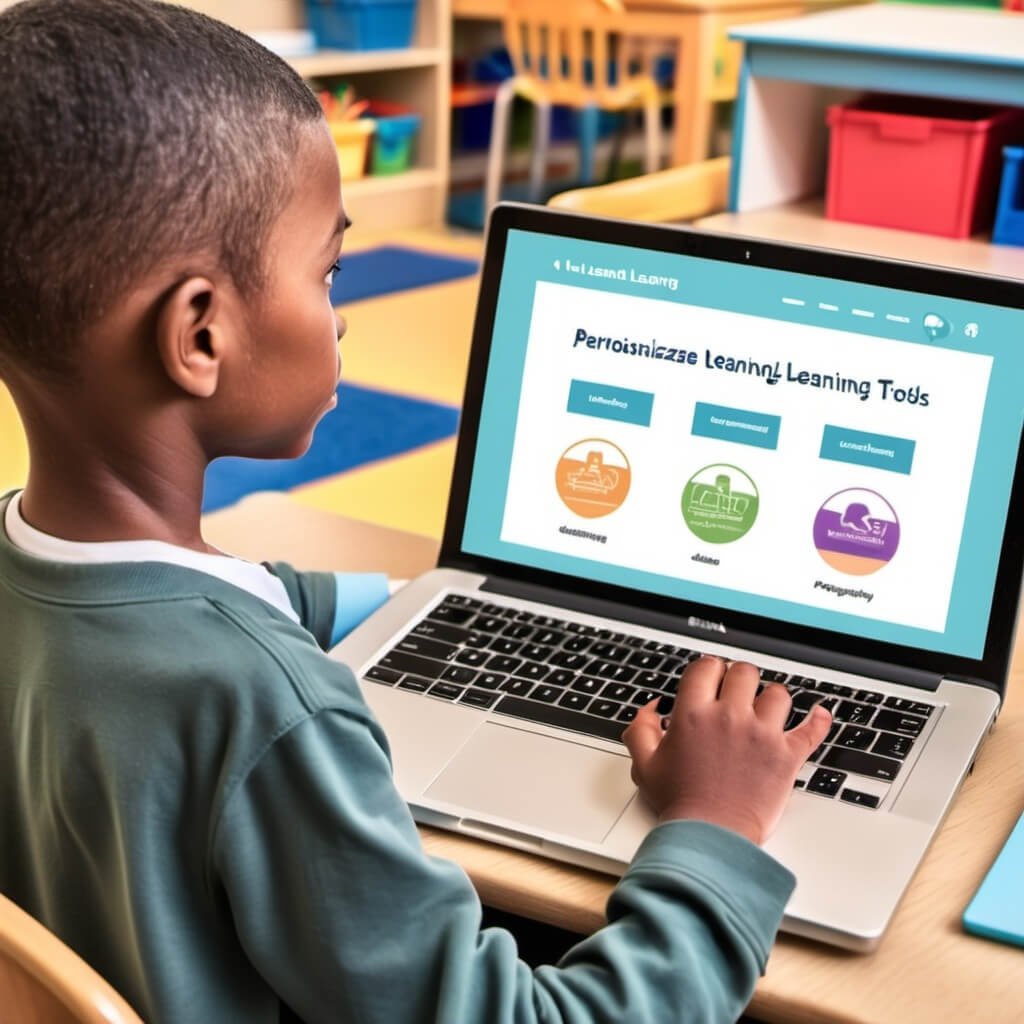In today’s rapidly evolving world, it’s more important than ever to equip young minds with the skills they’ll need to thrive in the future. As technology, science, and innovation continue to shape our society, providing a solid foundation in STEM education for kids is one of the best ways to prepare them for success. But what exactly is STEM, and why is it so essential for children?
In this article, I’ll share insights on how STEM education can unlock your child’s potential and why it’s becoming a crucial part of their academic journey. Whether you’re a parent, teacher, or simply someone interested in fostering a love for learning, understanding STEM’s impact on kids’ development can change how we approach education in 2024.
What is STEM Education?
Before diving into how STEM can benefit kids, let’s first break down what STEM stands for: Science, Technology, Engineering, and Mathematics. These subjects are interconnected and play a huge role in driving innovation in our world. In a STEM-focused curriculum, kids learn how these fields relate to one another and how they can be used to solve real-world problems.
As someone who has seen the impact of STEM first-hand, I believe it is incredibly important for kids to start learning these concepts at a young age. STEM education doesn’t just focus on teaching specific subjects—it encourages critical thinking, problem-solving, and creativity.
Why is STEM Education Important for Kids?
I think it’s safe to say that we live in an era where technology and innovation are at the forefront of everything. From advancements in AI to breakthroughs in renewable energy, kids today will face a future that’s highly dependent on their understanding of STEM subjects. Here are a few reasons why STEM education for kids is crucial:
- Fosters Critical Thinking and Problem-Solving: In STEM, kids are encouraged to think critically and solve problems. Whether it’s designing a new gadget or figuring out how to fix a machine, STEM helps kids become better problem-solvers.
- Prepares for Future Careers: Many of the highest-paying jobs in the world today are in STEM fields. Introducing kids to these subjects early on helps them explore career paths they may not have otherwise considered.
- Develops Creativity: STEM is not just about facts and figures; it’s about imagination. From creating new inventions to discovering how things work, STEM sparks creativity and encourages kids to think outside the box.
- Teaches Collaboration: Many STEM projects require teamwork, which helps kids develop valuable social skills. Whether it’s working on a science project or building something together in engineering class, collaboration is key in STEM education.
How Can You Get Started with STEM Education for Kids?
So, how can you get started introducing STEM education to kids? The great thing about STEM is that it can be incorporated into everyday life and doesn’t always require fancy tools or expensive kits. Here are a few practical ways to help your child start their STEM journey.
1. Make Learning Fun with Hands-On Projects
One of the most engaging ways for kids to learn is through hands-on projects. I’ve noticed that when kids actively participate in creating or building something, they learn concepts better and retain information longer. Whether it’s building a simple robot, creating a volcano for a science experiment, or learning about simple machines with household items, hands-on projects make STEM subjects more exciting.
Ideas for Hands-On STEM Projects:
- Build a Model Rocket: Let kids design and build a simple model rocket. It teaches them about physics, engineering, and aerodynamics.
- Create a Homemade Battery: Using basic materials, kids can create a battery to power a light bulb. This teaches them about chemistry and electricity.
- Coding with Games: Introduce kids to coding by creating simple games or interactive stories using platforms like Scratch or Code.org.
2. Incorporate STEM into Everyday Activities
STEM doesn’t have to be limited to a classroom setting. There are countless everyday activities that can introduce kids to scientific concepts, technology, engineering, and math. For instance, cooking can teach kids about measurements and chemical reactions, while gardening can introduce them to biology and environmental science.
Everyday STEM Activities:
- Baking and Measuring: While baking cookies, kids can practice measuring ingredients and learn about ratios, fractions, and chemical reactions.
- Building a Birdhouse: Woodworking projects help kids learn basic engineering and design principles.
- Exploring Nature: Go on a nature walk and talk about the different plants and animals. Kids can observe patterns in nature, leading to discussions on biology and ecology.
By integrating STEM into everyday activities, learning becomes more relatable and engaging.
3. Encourage Exploration through STEM Apps and Online Tools
There are plenty of resources and apps designed to introduce kids to STEM in a fun and interactive way. I’ve found that using educational technology can really enhance learning and spark curiosity in kids. Many platforms offer free or affordable tools to help children learn coding, math, engineering, and science concepts.
Top STEM Apps for Kids:
- Khan Academy: Offers free lessons on subjects ranging from math to computer science and physics.
- Tynker: A coding app for kids where they can create their own games and animations.
- BrainPOP: A collection of fun, animated educational videos that cover a wide range of STEM topics.
These resources can complement what kids are learning in school and help them develop essential skills for the future.
4. Visit Museums and Science Centers
If you have access to a science museum or planetarium, these can be excellent places to inspire a love of STEM in kids. Interactive exhibits and hands-on learning experiences can spark kids’ imaginations and give them a deeper understanding of STEM concepts.
STEM-Related Places to Visit:
- Science Museums: Many science museums feature exhibits on engineering, space exploration, and technology.
- Planetariums: Introduce kids to astronomy and space science with an educational visit to a planetarium.
- Maker Faires: Events like Maker Faires bring together engineers, scientists, and inventors to share their work with kids.
These experiences not only make STEM subjects more tangible but also help kids visualize their potential in these fields.
Benefits of STEM Education for Kids
The benefits of STEM education go beyond just learning technical skills. Here are a few long-term advantages of introducing your child to STEM at an early age:
1. Builds a Strong Foundation for Future Learning
STEM education encourages kids to think analytically, reason logically, and solve problems systematically. These skills are valuable not only in science and math but in all areas of life. When kids are taught how to approach challenges using a STEM mindset, they become lifelong learners and critical thinkers.
2. Boosts Confidence in Problem-Solving
As kids engage in STEM activities and successfully solve problems, their confidence grows. Whether they’re designing a bridge that holds weight or solving a complex puzzle, these achievements give kids the confidence to tackle challenges in all aspects of their lives.
3. Prepares for Future Careers
The world of work is changing fast, and many of the future job markets will be driven by STEM fields. By giving kids exposure to these subjects early on, they’ll have a better understanding of the many careers available to them in the future. From computer programming to robotics, STEM opens doors to a wide range of career opportunities.
Conclusion: Embrace the Power of STEM Education
In conclusion, STEM education for kids is more than just a trend—it’s a critical part of preparing young minds for the future. By introducing children to science, technology, engineering, and math, we’re not just teaching them facts; we’re helping them develop the skills needed to solve real-world problems, think critically, and work collaboratively.
As a parent, teacher, or mentor, you have the power to inspire the next generation of innovators and problem-solvers. Through hands-on projects, everyday learning, and exposure to new technologies, you can foster a love for STEM that lasts a lifetime.
I firmly believe that every child has the potential to thrive in STEM, and by embracing these subjects, we are giving them the tools they need to succeed in the world of tomorrow. Whether through apps, museums, or simple at-home experiments, there are endless opportunities to ignite curiosity and unlock their full potential. Let’s work together to build a brighter future through STEM education!
FAQs
1. What do children learn in STEM education?
Many children enjoy exciting activities and performing tasks that are based on Science, Technology, Engineering, and Mathematics – this is known as STEM education.
2. Why do you think it is essential for children to learn about STEM?
In addition to improving academic performance, STEM teaches thinking skills and imagination to children enabling ‘career ready’ concepts for high standard jobs.
3. When can I begin STEM education activities for my child at home?
You may begin from simple science projects, coding games and other educational apps for them to get used to STEM in an interesting way.
4. Which online STEM-related websites for kids are more suitable than the rest?
So, Khan Academy, Tynker, and Codeacademy are a few other sites that provide interactive lessons on different ares of STEM starting from programming, and even teaching robotics.
5. Do cheap educational websites for children offering STEM learnings exist?
For sure! Plenty of extremely affordable or even completely free programs, including those based in the community, the internet and even curiously themed subscription boxes are available to ensure that everyone receives STEM Education.





